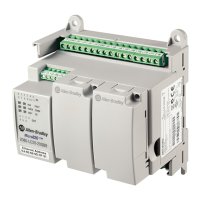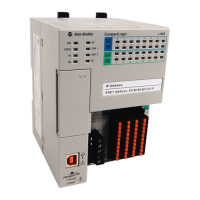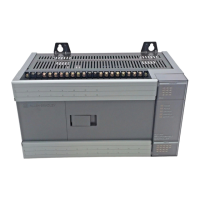Process Control Instructions
Rockwell Automation Publication 1756-RM006K-EN-P - November 2018 167
CV1Initializing BOOL Initialization mode indicator for CV1.
Set TRUE when CV1InitReq or
function blockFirstScan are TRUE, or
on a TRUE to FALSE transition of
CV1Fault (bad to good).
CV1Initializing is set FALSE after the
function block has been initialized
and CV1InitReq is no longer TRUE.
CV2nitializing BOOL Initialization mode indicator for CV2.
Set TRUE when CV2InitReq, function
blockFirstScan or OLCFirstRun, are
TRUE, or on a TRUE to FALSE
transition of CV2Fault (bad to good).
CV2Initializing is set FALSE after the
function block has been initialized
and CV2InitReq is no longer TRUE.
CV3initializing BOOL Set TRUE when CV3InitReq, function
blockFirstScan or OLCFirstRun, are
TRUE, or on a TRUE to FALSE
transition of CV3Fault (bad to good).
CV3Initializing is set FALSE after the
function block has been initialized
and CV3InitReq is no longer TRUE.
CV1HAlarm BOOL CV1 high alarm indicator. TRUE
when the calculated value for CV1 >
100 or CV1HLimit.
CV12HAlarm BOOL CV2 high alarm indicator. TRUE
when the calculated value for CV2 >
100 or CV2HLimit.
CV3HAlarm BOOL CV3 high alarm indicator. TRUE
when the calculated value for CV3 >
100 or CV3HLimit.
CV1LAlarm BOOL CV1 low alarm indicator. TRUE when
the calculated value for CV1 < 0 or
CV1LLimit.
CV2LAlarm BOOL CV2 low alarm indicator. TRUE when
the calculated value for CV2 < 0 or
CV2LLimit.
CV3LAlarm BOOL CV3 low alarm indicator. TRUE when
the calculated value for CV3 < 0 or
CV3LLimit.
CV1ROCPosAlarm BOOL CV1 rate of change alarm indicator.
TRUE when the calculated rate of
change for CV1 exceeds
CV1ROCPosLimit.
CV2ROCPosAlarm BOOL CV2 rate of change alarm indicator.
TRUE when the calculated rate of
change for CV2 exceeds
CV2ROCPosLimit.
CV3ROCPosAlarm BOOL CV3 rate of change alarm indicator.
TRUE when the calculated rate of
change for CV3 exceeds
CV3ROCPosLimit.

